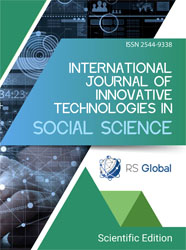FROM TEACHING TO PRODUCTION: STRATEGIES FOR IMPROVING WRITING IN THE FFL CLASSROOM
Abstract
Writing plays a crucial role in secondary education, both as a communication tool and a means of learning, helping students assimilate content and become familiar with the writing requirements specific to each discipline. This study aims to assess writing teaching practices in French as a Foreign Language (FFL) classroom and identify teaching interventions to enhance learners' written output. Through a questionnaire, teachers shared their perceptions of their students' writing challenges and their strategies to address them. The analysis of the responses reveals a broad range of practices that focus on various stages of the writing process, with particular emphasis on revising texts.
References
Bangert-Drowns, R & Wilkinson, B. 2004. The effects of school based writing to learn interventions on academic achievement : A meta-analysis. Review of Educational Research, 74(1). 29–58.
Brown, J. (2007). Feedback: the student perspective. Research in Post-Compulsory Education, 12 (1), 33-51.
Bucheton, D. (2014). Refonder l’enseignement de l’écriture. Vers des gestes professionnels plus ajustés du primaire au lycée. Paris, Retz.
Chabanne, J-C & Buchetion, D. (2002). « L’activité réflexive dans les écrits intermédiaires : Quels indicateurs ? »
Cornaire, C. & Raymond, M. (1999). La production écrite, Paris, CLE International,
Delacambre, I. (2007). « Du sujet scripteur au sujet didactique », Le français aujourd’hui, n° 157, 2007, p.33-41.
Dore, R (1981). Influence relative de modalités de rétroaction dans l’apprentissage chez des enfants déficients mentaux moyens (Thèse de doctorat). Université de Montréal. ESL students in the mainstream classroom. Language Arts 77(3) 258-264.
Fayol, M. (1991). From sentence production to text production: Investigating fundamental processes. European Journal of Psychology of Education, 101-119.
Friatin, L. (2018). Students’ Perception on Teaching Writing Through Facebook Group in EFL Class. Journal for Language and Foreign Language Learning 7 (1) : 55–76
Graham, S & Dolores, P. 2007.Ameta-analysis of writing instruction for adolescent students. Journal of Educational Psychology, 99(3). 445–476.
Hayes, J-R & Flower, Linda. « Writing research and the writer », American Psychologist, n°41, 1980, 1106-1113.
Klein, D. & Boscolo, P. 2016. Trends in Research on Writingas a Learning Activity. Journal of Writing Research, 7(3). 311-350. doi: 10.17239/jowr-2016.07.3.01.
Reuter, Y. (2002). Enseigner et apprendre à écrire. Construire une didactique de l'écriture. Paris: ESF.
Veslin, J & Veslin, O. (1992). Corriger des copies : former pour évaluer. Pédagogies pour demain, Hachette Education.
Vigner, G. Écrire, éléments pour une pédagogie de la production écrite, 1982, Paris : Publisher.
Watts-Taffe, S., & Truscott, D. (2000). Using what we know about language and literacy development for
Views:
288
Downloads:
110
Copyright (c) 2025 Souad Benabbes, Abderrazak Benzouai

This work is licensed under a Creative Commons Attribution 4.0 International License.
All articles are published in open-access and licensed under a Creative Commons Attribution 4.0 International License (CC BY 4.0). Hence, authors retain copyright to the content of the articles.
CC BY 4.0 License allows content to be copied, adapted, displayed, distributed, re-published or otherwise re-used for any purpose including for adaptation and commercial use provided the content is attributed.











